Dimensions of a washing machine and dryer in a column
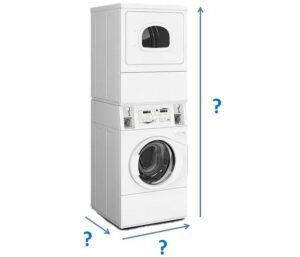 The most popular way to install a washer and a separate dryer is to place the equipment in a column. The devices are placed one on top of the other, thereby saving free space in the room. To prevent the clutter from being too noticeable, it is often hidden in a closet with a niche.
The most popular way to install a washer and a separate dryer is to place the equipment in a column. The devices are placed one on top of the other, thereby saving free space in the room. To prevent the clutter from being too noticeable, it is often hidden in a closet with a niche.
To order furniture, you need to know the dimensions of the washing machine and dryer in the column. The niche should accommodate both units, taking into account the height of the legs and the stand between them. We will tell you how to correctly calculate the dimensions of the “structure”.
Parameters of a column of washing machines
Calculating the width, depth and height of a niche for placing equipment is quite simple. To calculate the dimensions of the column, you need to know the parameters of the washing machine and dryer. The sizes of the equipment vary, so everything will depend on what models of devices you have chosen.
To calculate the length of the column, you need to add up the height of the washer and dryer (taking into account their legs), and add a couple of centimeters of the stand, which must be provided between the devices. Of course, it is advisable to order the cabinet not end-to-end, but leave a couple of spare centimeters.
Typically, the height of a drying machine is 85 cm. As for washing machines, they can reach heights from 85 to 90 cm. The exact dimensions of the equipment can be found in the technical data sheet, or even better, measured yourself.
Let's calculate the dimensions of the column. If the height of the dryer is 85 cm, and the height of the washing machine is 90 cm, we end up with 175 cm. Plus 2 cm of the stand - 177 cm. It is also advisable to leave a small margin and order a niche cabinet with a length of at least 180 cm.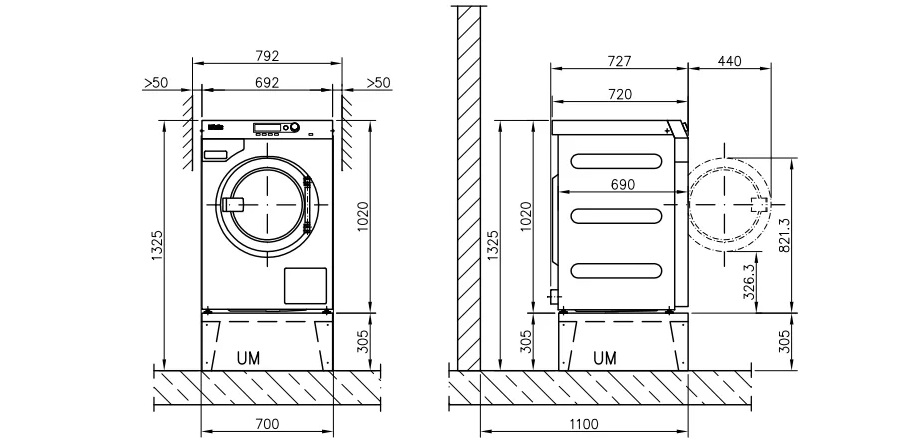
The depth of washing machines and dryers varies.There are both full-size and narrow equipment. In this case, it is important to measure the devices correctly - according to the most protruding parts of the body. This is necessary so that the door of the future cabinet does not rest against the hatches of the devices when closing.
When calculating the depth of the column, it is necessary to provide a spare 5-6 cm necessary for connecting equipment to communications.
It would be useful to leave a small margin, about 2-3 cm. If the depth of the washer and dryer is 60 cm, then the column should be at least 60 + 5 + 2 = 67 centimeters. This will be enough to accommodate the washing machines.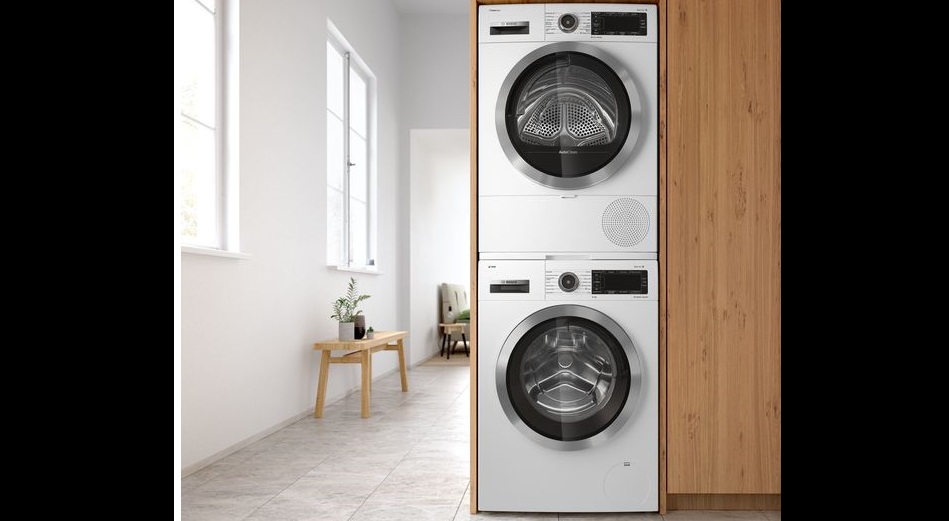
The width of the future cabinet will correspond to the width of both machines, plus a small margin of about 1 cm. If the washer and dryer occupy the standard 60 cm, then the niche should be at least 61 cm. It is important here that furniture makers do not forget to take into account the thickness of the material. If this is 1.6 cm chipboard, then the estimated dimensions of the furniture will be 63.2 cm.
This is how the dimensions of the column are calculated. With these initial data, the height of the cabinet for machines should be 180 cm, width 63.2 cm, depth 67 cm. It is important not to forget to add a small margin for freely opening the doors and connecting washing equipment to the water supply and sewerage.
How to connect a column to communications?
When the equipment is installed, you need to connect the units to the house communications. To connect dryers, one socket is usually sufficient. If the dryer is a ventilation type, it may need to be included in the ventilation system.
If you have a ventilated dryer, then you need to proceed as follows:
- find the hole on the body of the machine;
- connect the air duct to it (it is made in the form of a flexible corrugation and is included with the equipment) and secure it with a clamp;
- connect the second end of the corrugation to the ventilation system (if there is none, then the tube is simply directed into the window).
It is important to try to position the duct as evenly as possible. If you bend the corrugation too much, air circulation will be disrupted. The hood will not work at full capacity.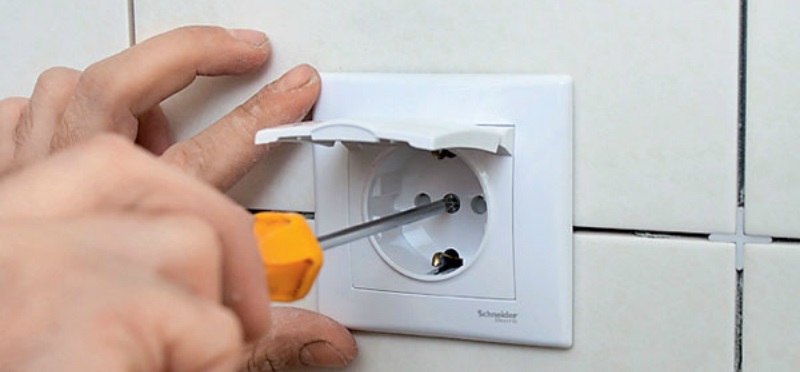
If the column is placed in a room with high humidity, then the air duct should not be placed on top. Otherwise, condensation will constantly accumulate on the corrugation. In this case, you need to position the tube at the level of the dryer.
If the dryer is a condensing type, then its drain hose is connected to the sewer pipe. You can limit yourself to a simpler method, and while the machine is running, point the tube into the bathroom to drain the water. However, this method is not entirely convenient.
Connecting the washing machine to the water supply and sewerage is carried out as standard. The machine always comes with an inlet and drain hose. A step-by-step algorithm for connecting equipment to communications is in the equipment instructions.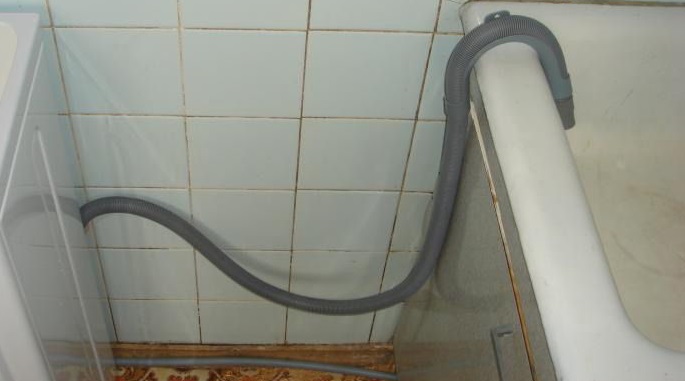
The next stage is connecting the column to the electrical network. You can extend a separate line from the panel for machines or connect to a regular outlet. The second option is simpler and more expedient.
It is important for both the washer and dryer to provide their own grounded outlet.
If you allocate a double socket for machines, this is fraught with a short circuit. Due to the increased load, its body may begin to melt. Therefore, it is worth taking care of a separate connection point for each device.
It is advisable that the electrical network be provided with a residual current device or circuit breaker. This will protect the equipment from voltage surges and current leakage.After connecting the column to the communications, you can start test washing and drying.
Interesting:
Reader comments
- Share your opinion - leave a comment

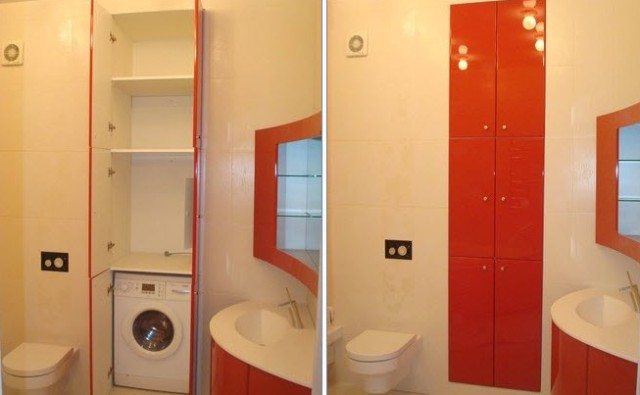

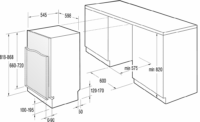
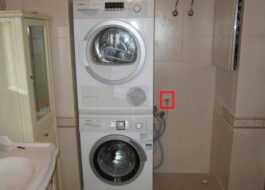

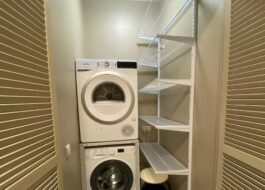














Add a comment